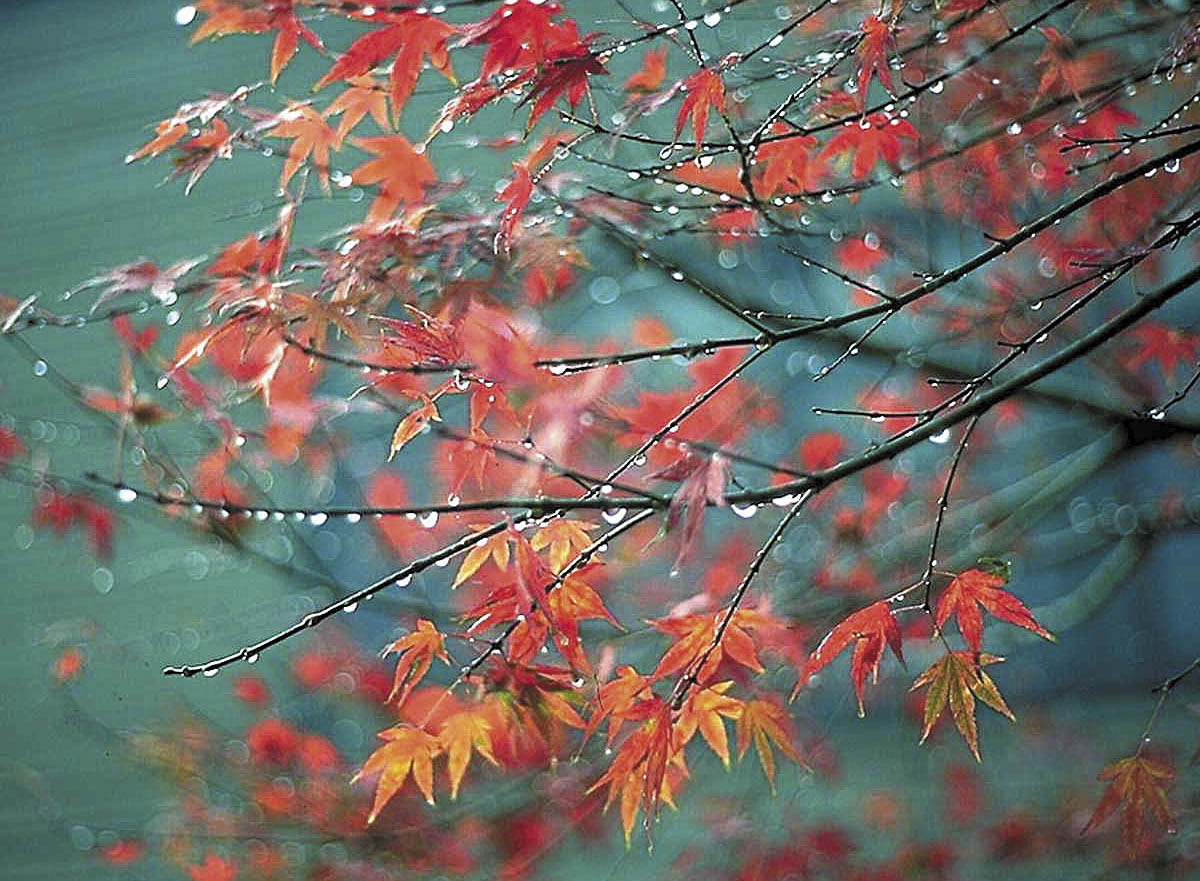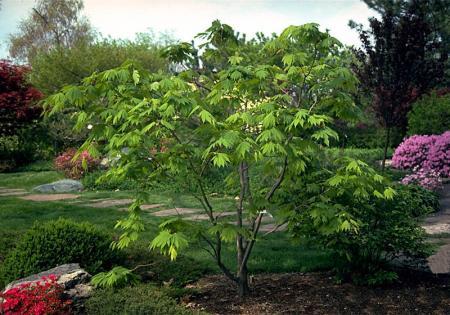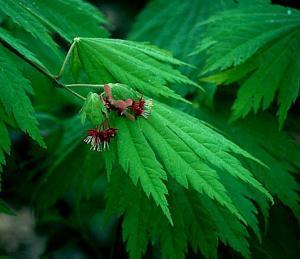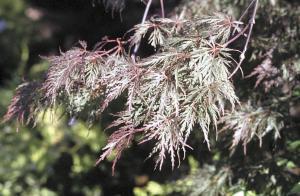
 |
|
| Acer japonicum 'Acontifolium' (courtesy Horticopia) |
Japanese maples are especially prized for the diversity of size, shape and colour of foliage. Foliage colour changes with the season, and many are especially spectacular in the autumn. Japanese maples are usually categorized according to leaf type. These include: palmate types: large leaves that look like your hand. Deeply divided types: the leaves are divided down to the petiole. Dissected leaf types: the leaves are fine and deeply dissected or serrated. Other: these include variegated leaf types and linear lobum or line-leaf types.
Planting and care of Japanese maples
Site selection:
Japanese maples grow well in our climate if a few basic principles are followed. The most important is to select a sheltered planting site that is out of the severest northwest winter winds. If it must be exposed to wind, ensure the tree is well wrapped with burlap in the winter months. Japanese maples grow well in any well-drained soil. They grow in full sun to almost full shade and will do best with protection from mid-day sun. The amount of light will affect the leaf colour; red leaf types will be more colourful in higher light conditions.
|
Planting: Mix one part peat moss to three parts of soil in the planting hole, which should be much larger than the root ball. Water heavily at time of planting and mulch the entire area with a two-inch layer of bark or leaves to ensure water retention and keep the roots cool. Only moderate amounts of fertilizer such as a transplanter with a formula in ratio of 5-15-5 should be used at planting time. Fertilizing and trimming of established plants: Diseases: Winter protection: Japanese maple varieties:
|
| Common name Botanical name |
Height | Zone | Description |
| Golden full moon maple Acer japonicum 'Aureum' |
3m tall | zone 6 | Rounded yellow leaves add a bright contrast to the garden. Slow growing; prefers a sheltered site. |
| Fern leaf maple Acer japonicum 'Aconitifolium' |
5m tall | zone 5 | Broad, deeply cut green leaves turn a brilliant scarlet in the fall. Upright, multi-branched habit. |
| Golden Japanese maple Acer palmatum 'Aureum' |
5m tall | zone 5 | Yellow leaves with distinctive light green undertones. Bright yellow fall colour. |
| Bloodgood Japanese maple Acer palmatum 'Bloodgood' |
6m tall | zone 5 | One of the most popular and hardy varieties. Deep, purple-red leaves hold their colour well all season. |
| Emperor 1 Japanese maple Acer palmatum 'Emperor 1' |
6m tall | zone 5 | Extremely dark purple foliage fades little in summer heat. Hardy and vigorous. |
| Fireglow Japanese maple Acer palmatum 'Fireglow' |
5m tall | zone 6 | Bright, reddish-purple foliage allows this tree to stand out in any landscape. |
| Osakazuki Japanese maple Acer palmatum 'Osakazuki' |
6m tall | zone 6 | Large green leaves in summer turn brilliant scarlet in fall. |
| Red Pygmy Japanese maple Acer palmatum 'Red Pygmy' |
1.5m tall | zone 6 | Dwarf variety with deeply cut, very narrow lobed red leaves turning orange-yellow in the fall. |
| Suminagashi Japanese maple Acer palmatum 'Suminagashi' |
4m tall | zone 5 | Serrated, deeply divided wine-red leaves on a hardy tree. Very attractive. |
| Crimson Queen cutleaf maple Acer pal. dis. 'Crimson Queen' |
2m tall | zone 6 | Deeply divided red cutleaf maple turning scarlet in the fall. Graceful, mounding habit. |
| Green cutleaf maple Acer pal. dis. 'Viridis' |
1.5m | zone 6 | Finely dissected lacy green leaves turn golden yellow in the fall. Beautiful weeping form. |
| Inaba Shidare cutleaf maple Acer pal. dis. 'Inaba Shidare' |
2m tall | zone 6 | Vigorous grower with deep purple-red deeply cut leaves turning bright scarlet in fall. |
Japanese Maples |

